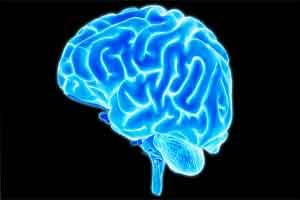- Home
- Editorial
- News
- Practice Guidelines
- Anesthesiology Guidelines
- Cancer Guidelines
- Cardiac Sciences Guidelines
- Critical Care Guidelines
- Dentistry Guidelines
- Dermatology Guidelines
- Diabetes and Endo Guidelines
- Diagnostics Guidelines
- ENT Guidelines
- Featured Practice Guidelines
- Gastroenterology Guidelines
- Geriatrics Guidelines
- Medicine Guidelines
- Nephrology Guidelines
- Neurosciences Guidelines
- Obs and Gynae Guidelines
- Ophthalmology Guidelines
- Orthopaedics Guidelines
- Paediatrics Guidelines
- Psychiatry Guidelines
- Pulmonology Guidelines
- Radiology Guidelines
- Surgery Guidelines
- Urology Guidelines
New Scans for diagnosing brain and psychiatric disorders

A type of MRI may prove extremely useful in diagnosing neurological, psychiatric disorders, a recent study has found. The study has been published in the journal Neuron.Researchers Caterina Gratton and colleagues conducted a study for determining the clinical applications of functional connectivity magnetic resonance imaging (fcMRI). The researchers found that this type of brain scan can be used for diagnosis of brain and psychiatric disorders.
This diagnostic test may prove useful in the current medical scenario where there is a dearth of laboratory tests for diagnosis of depression, migraine, bipolar disorder and many other brain ailments. Such mental illnesses are often determined by the doctors based on self-reported behaviors and symptoms.
For the study Petersen, postdoctoral researcher and first author Caterina Gratton, PhD, and colleagues analyzed a set of data collected by the Midnight Scan Club, a group of Washington University scientists took turns undergoing myriad scans in an MRI machine late at night, when the demand for such machines and, consequently, the usage fees tend to be low.
The researchers analyzed data from more than 10 hours of fcMRI scans on each of nine people, collected in 10 separate one-hour sessions for each person. During the scans, each person performed tasks related to vision, memory, reading or motor skills, or rested quietly.
To create a functional connectivity map, Gratton divided the brain's surface into 333 regions and identified areas that became active and inactive in unison. She then constructed brain network maps for each individual, showing patterns of correlation between parts of the brain.
The sheer quantity of data available on each person allowed her to analyze how much an individual's brain networks changed from day to day and with different mental tasks.
The answer? Not much.
"Brain networks captured by fcMRI are really about the individual," Gratton said. "Whether someone's watching a movie or thinking about her breakfast or moving her hands makes only a small difference. You can still identify that individual by her brain networks with a glance."
The consistency of the fcMRI scans makes them a promising diagnostic tool. Although the technique's potential to identify brain disorders and diseases was noted years ago, fcMRI-based diagnostic tests have yet to make their way into doctors' offices. Progress has been stymied by confusion over whether the scans reflect fundamental, stable features of the brain, or if they change with every passing thought.
"This is a step toward realizing the clinical promise of functional connectivity MRI," said senior author Steven Petersen, PhD, the James S. McDonnell Professor of Cognitive Neuroscience in Neurology and a professor of neurosurgery, of biomedical engineering, of psychological and brain sciences, and of radiology. "Before we can develop diagnostic tests based on fcMRI, we need to know what it is actually measuring. We show here that it's not measuring what you're thinking, but how your brain is organized. That opens the door to an entire new field of clinical testing."
Further, the researchers found that the technique was powerful enough to distinguish people who were extraordinarily alike. All of the scanned brains belonged to young, healthy scientists and doctors.
"We need more data before we can know what is normal variation in the population at large," Gratton said. "But the individual differences were really easy to pick up, even in a population that is really very similar. It's exciting to think that these individual differences may be related to personality, cognitive ability, or psychiatric or neurological disease. Thanks to this work, we know we have a reliable tool to study these possibilities."

Disclaimer: This site is primarily intended for healthcare professionals. Any content/information on this website does not replace the advice of medical and/or health professionals and should not be construed as medical/diagnostic advice/endorsement or prescription. Use of this site is subject to our terms of use, privacy policy, advertisement policy. © 2020 Minerva Medical Treatment Pvt Ltd